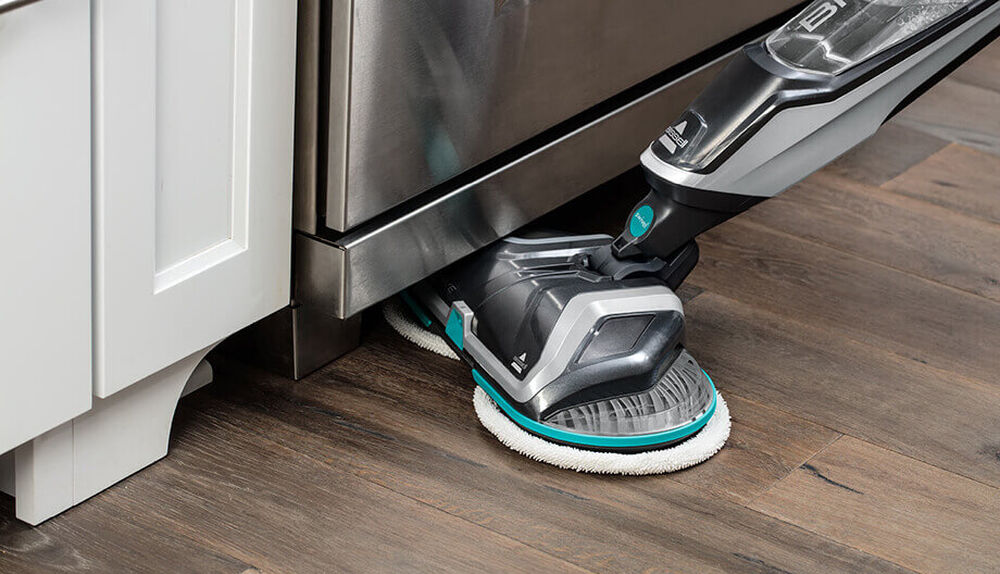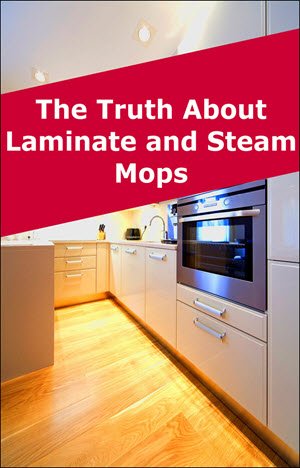Using a steam cleaner on laminate flooring is generally not recommended as it can cause damage. The moisture can warp the planks and ruin the adhesive.
Steam cleaning is a popular method for sanitizing and refreshing various surfaces, but when it comes to laminate flooring, caution is paramount. Laminate floors consist of multiple layers, with the topmost being a protective clear coat over a decorative layer.
Introducing excess moisture from steam cleaning can penetrate these layers, leading to swelling, warping, and potentially irreversible damage. It’s crucial to maintain the integrity of laminate flooring by adhering to cleaning methods that prevent water infiltration. Regular sweeping, dry mopping, or using a slightly damp cloth are safe options, ensuring your floors remain pristine without compromising their structural integrity or aesthetic appeal.
Steam Cleaning And Laminate Flooring Compatibility
Laminate flooring consists of multiple synthetic layers fused together. These layers include a photograph layer that replicates wood texture. A protective layer on top ensures durability and shine. Laminate’s core is made from high-density fiberboard (HDF), which can absorb moisture easily.
Using a steam cleaner may seem like a good idea for tough stains. But, it can be harmful to laminate floors. The generated steam penetrates the laminate layers. This can cause swelling, warping, and irreversible damage to your floors. Steam triggers delamination, where layers start to separate. Over time, the floor loses its protective coating and shine.
| Risk | Consequence |
|---|---|
| Moisture Seepage | Swelling and warping of the floorboards |
| Delamination | Layer separation that leads to irreparable damage |
| Protective Layer Damage | Loss of shine and susceptibility to scratches |
Benefits Of Using Steam Cleaners
Steam cleaners offer impressive deep cleaning capabilities. They remove dirt and grime that regular mops might miss. Their power lies in using steam. This steam reaches into tiny crevices and microscopic spaces within laminate surfaces.
Steam cleaning also plays a role in reducing allergens and bacteria on your laminate flooring. The hot vapor penetrates the surface. It can kill most germs and dust mites. Many households favor this for a healthier living environment. Regular use of steam cleaners may keep your floors both clean and hygienic.
Manufacturer Guidelines For Laminate Floor Care
Consulting the manufacturer’s guidelines is crucial before using a steam cleaner on laminate floors. Most laminate flooring producers provide specific care instructions to maintain the floor’s appearance and longevity. Ignoring these guidelines may result in damage that voids the warranty. It is essential to know whether steam cleaning is safe for your specific type of laminate flooring. Many manufacturers explicitly advise against steam cleaning, as the excessive moisture can seep into the planks, causing warping or swelling. Instead, they often suggest less invasive cleaning methods, such as dry dust mopping or using a damp cloth, to keep the flooring in top condition. Adhering to recommended cleaning practices not only preserves the life of your flooring but also ensures that the warranty remains intact.

Credit: www.hgtv.com
Alternative Cleaning Methods For Laminate Floors
Maintaining your laminate flooring with daily care is crucial. Use a soft-bristle broom or a microfiber mop to gently sweep away dirt. This keeps the surface scratch-free and shiny. For tougher spots, a damp mop with water usually does the trick.
Safe products are key for laminate floor care. Make sure to choose cleaners that are specifically designed for laminate. They help protect the flooring’s protective coating. Stay clear of harsh chemicals and abrasive tools. They can damage laminate floors permanently.
Precautions When Cleaning Laminate Flooring
Steam cleaners can harm laminate flooring if not used correctly. Laminate floors are sensitive to moisture. Limit exposure to water to protect them. Use a steam cleaner with caution for the best results. Use it on the lowest setting and never let the steam linger in one spot. Make sure to dry the floor quickly right after steaming.
Scratches and other damages must be avoided to maintain the floor’s look. Do not use scrub brushes or abrasive pads with a steam cleaner. Always use soft cloths or pads designed for laminate. Do not add vinegar or other harsh chemicals to your steam cleaner. These can damage the laminate’s protective coating.

Credit: www.bissell.com
Expert Tips For Laminate Floor Longevity
Maintaining laminate flooring demands consistent cleaning. Use a soft-bristle broom to sweep daily. Dirt scratches laminate. Vacuum with a soft brush weekly. A microfiber mop and laminate-approved cleaner keep shine without damage.
Spills are enemies of laminate flooring. Quick wiping prevents staining and warping. Spill? Grab a clean cloth. Gently blot—no rubbing. For sticky stuff, use damp cloth. Dry the area immediately afterwards.

Credit: thesteamqueen.com
Frequently Asked Questions On Can You Use A Steam Cleaner On Laminate Flooring
Can Steam Cleaners Damage Laminate Floors?
Steam cleaners can cause irreparable damage to laminate floors by warping and swelling the material due to the high heat and moisture levels.
Is It Safe To Steam Clean Laminate?
Using steam cleaners on laminate flooring is generally not advised, as the moisture can penetrate and ruin the laminate’s core layers.
What Cleaning Method Is Best For Laminate?
Dry mopping and vacuuming are preferred for laminate floors; if needed, use a slightly damp mop with laminate-specific cleaner.
How Do You Protect Laminate While Cleaning?
To protect laminate flooring during cleaning, avoid excessive water, use protective pads under furniture, and promptly wipe up spills.
Conclusion
Caring for laminate flooring needn’t be complex. Steam cleaning presents risks, yet with the correct knowledge, it’s viable. Choose your steam cleaner wisely, and prioritize your floor’s longevity with careful use. Keeping these tips in mind will ensure a clean and undamaged laminate surface, blending hygiene with preservation effectively.

